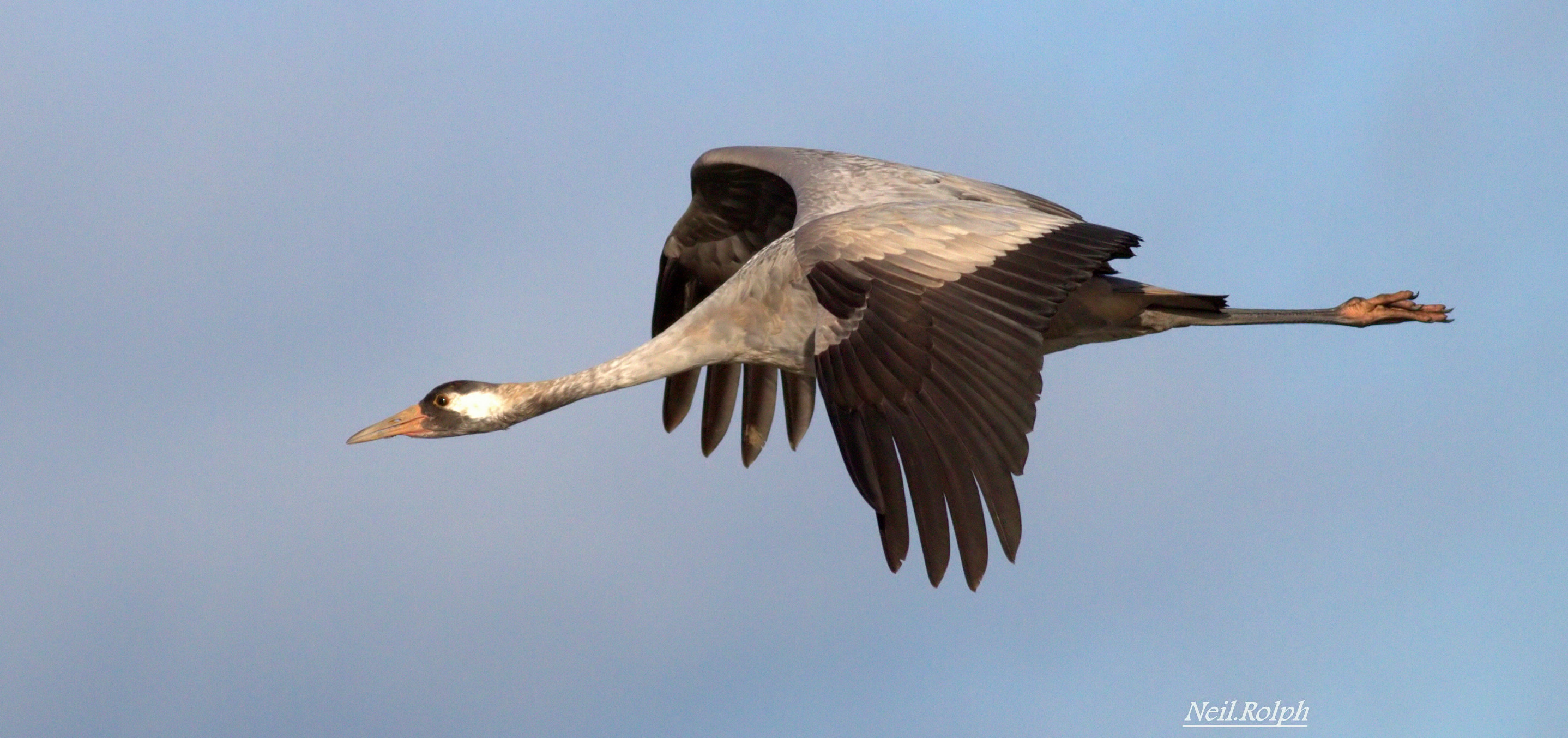Common Crane breeding success at Lakenheath Fen
For the second year running, two pairs of Common Cranes have successfully raised three chicks between them on a Suffolk RSPB reserve.
Common Crane is one of Britain's rarest breeding birds and with only around 25 pairs nesting in the country each year. Common Crane had been extirpated in Britain since the 1600s due to hunting and loss of habitat. They recolonised the Norfolk Broads in the 1970s and have gradually started breeding elsewhere in the country.
Two pairs of cranes arrived at Lakenheath Fen in 2007 and have nested on the reserve every year since then. In 2009, one of these pairs fledged the first chick to reach that stage in the Fens for over 400 years. Since then, the two pairs of cranes at Lakenheath Fen had reared a total of eight chicks until this year. Common Cranes live an average of 20-25 years, and find a mate and start to breed at between three and five years of age.
Staff and volunteers at Lakenheath Fen RSPB on the border of Suffolk, Norfolk and Cambridgeshire, are over the moon that this scarce species, which is very shy and secretive during the breeding season, has had this success in front of an audience of commuters on the Abellio Greater Anglia train route between Norwich and Ely.
.jpg)
An RSPB trail camera photo of one of the adult Common Cranes feeding its chicks in full view of the busy commuter train line behind (Photo: RSPB).
Lakenheath Fen Site Manager Dave Rogers said: "Our two pairs of crane parents have done us proud. We put a lot of effort into creating a great home for them here at Lakenheath Fen and they have repaid us by raising a total of three chicks between them for the second year running. The fact that people have been able to spot them from the train as it passes the reserve has only added to the excitement.
"They are such charismatic birds and we look forward to seeing them ranging across the Fens this autumn and winter, and mixing in with the other Fenland cranes that now breed in our part of the country. Hopefully these three young cranes will go on to find mates over the next three-five years, and eventually settle down and raise chicks of their own."
By using a remote trail camera set up in one of the birds' favoured feeding spots, Dave and his team were able to capture intimate photographs of one of the reserve's pairs of adult cranes with their two chicks, which made their first flight in July. Since then they have been feeding and building up their strength and confidence under the watchful eyes of their parents, before they leave the reserve in the autumn to feed across the wider Fens. The pair have equalled their feat of 2015, when they became the first pair of cranes at Lakenheath to successfully raise two young. The reserve's second pair of cranes — known affectionately to staff and volunteers as 'Little and Large ' — have also repeated their success of 2015 by rearing a single chick again this year.
Dave Rogers added: "It's fantastic that cranes are doing so well and have matched last year's success, but a reserve-first is always special. This year, our first is that for the first time one of our crane pairs — 'Little and Large' — succeeded in raising a chick from a second nesting attempt in the same breeding season. After their first attempt failed this is especially gratifying."

Common Crane, Lakenheath Fen RSPB, Suffolk (Photo: Neil Rolph)
Lakenheath isn't the only site in The Fens that has had success with cranes breeding this year. Not to be outdone, Nene Washes RSPB, just east of Peterborough, has also had three young cranes fledge from two pairs this summer, with a third pair unfortunately failing in their breeding attempt this time around.
Nene Washes Site Manager Charlie Kitchin said: "To have six young cranes raised on RSPB reserves in The Fens this year, adding to what is still a vanishingly small number of these superb birds that breed in this country — that's really something to celebrate. Although it's not a competition, we're hopeful we can go one better at the Nene Washes next year and have young from all three pairs!"
For people looking to see these birds for themselves, the best place to spot the cranes at Lakenheath is from Joist Fen viewpoint, around a mile and a half from the visitor centre. If you have mobility difficulties, permits are available to drive down to a parking area near New Fen viewpoint, you half a mile closer to Joist Fen viewpoint.
Lakenheath's cranes will soon be leaving the reserve to join others in the wider Fens area to feed and roost together over the winter. They may even join up with the cranes at the Nene Washes, where flocks gather regularly throughout winter. For the chance to see cranes in the Nene Washes this winter, from the RSPB car park at Eldernell it is a short walk to the raised bank from which the best views are usually to be had. Those planning a trip to RSPB Nene Washes need to come prepared though, as the site is without any visitor facilities.

